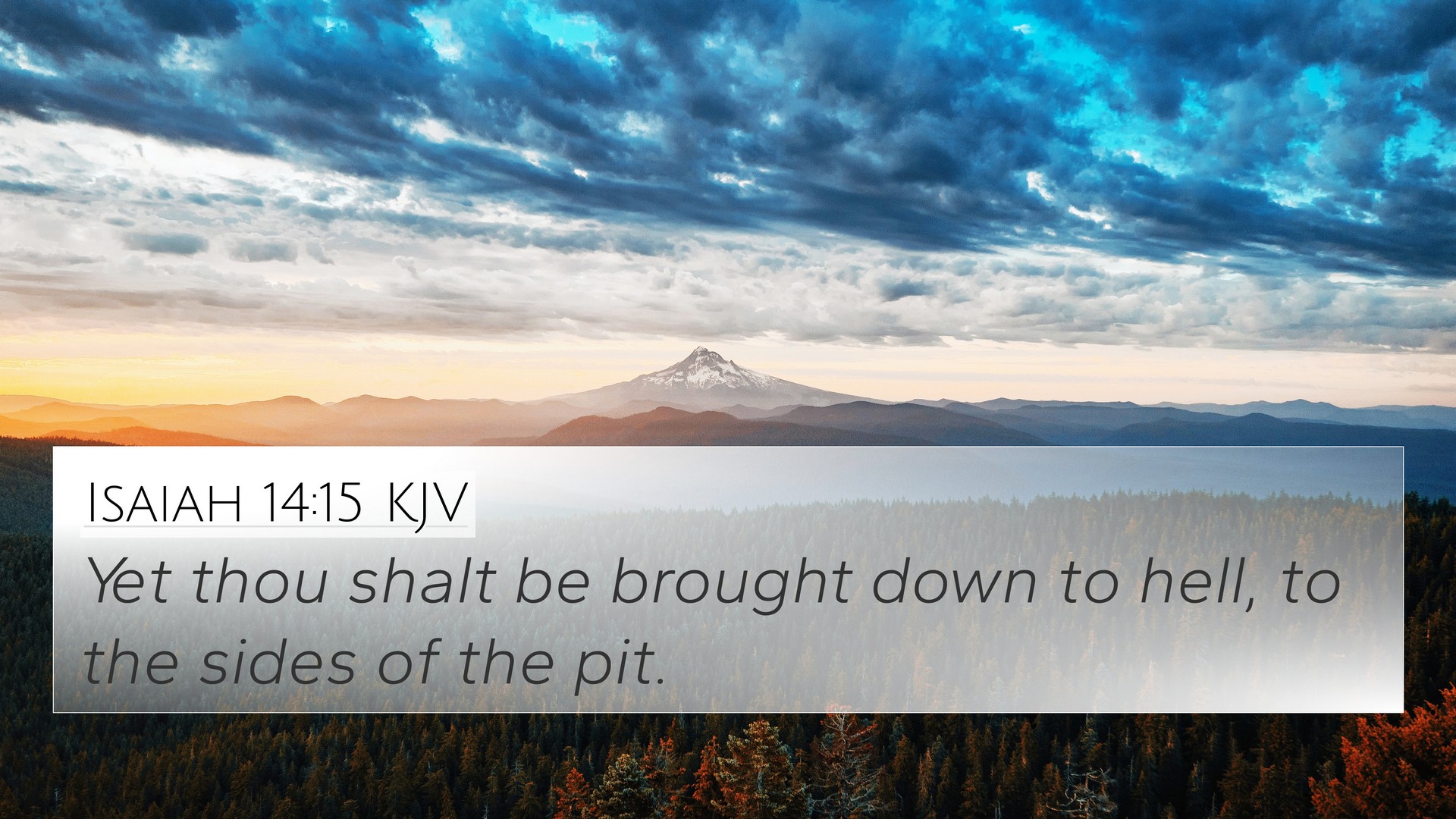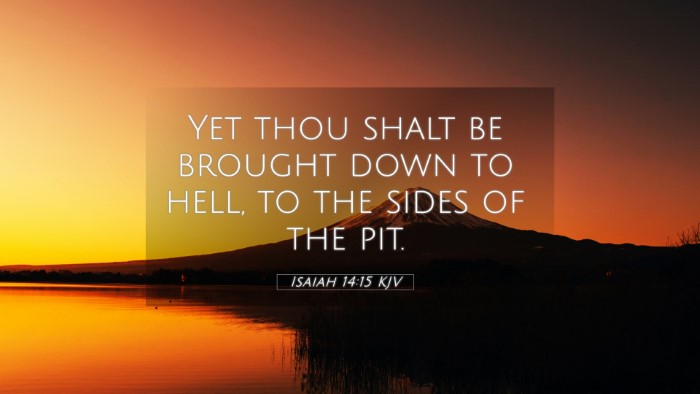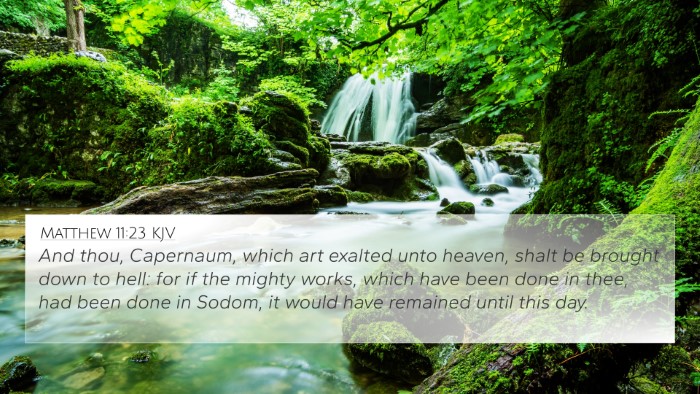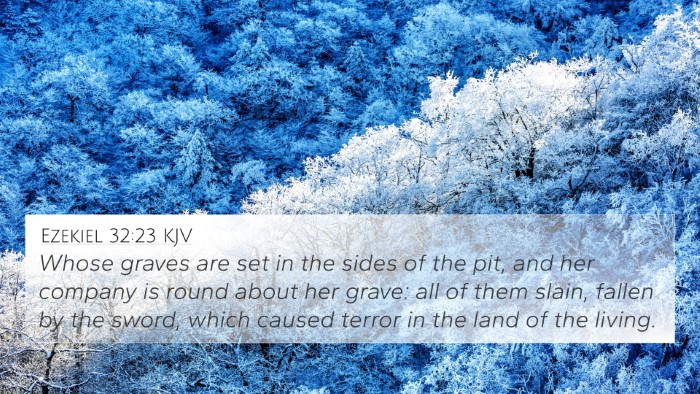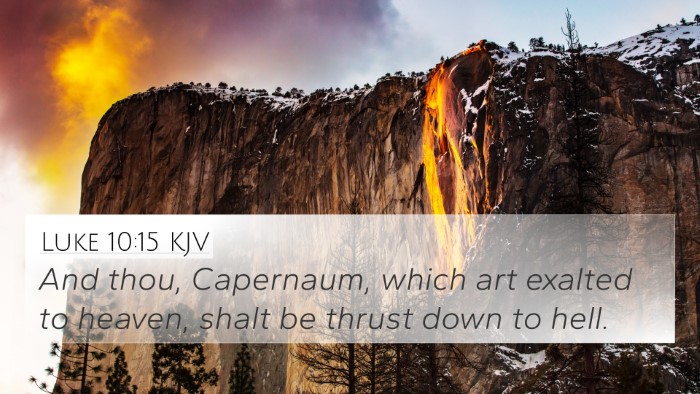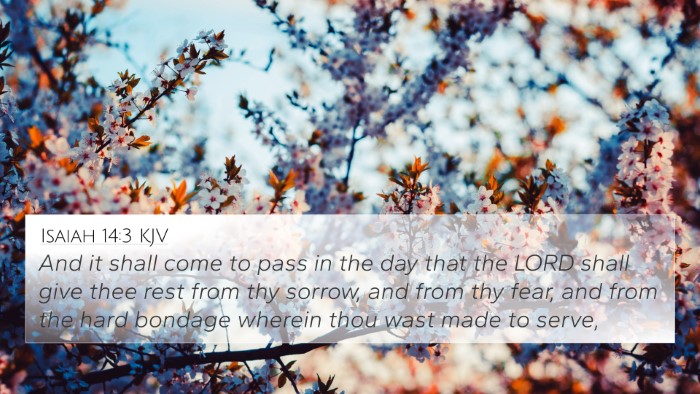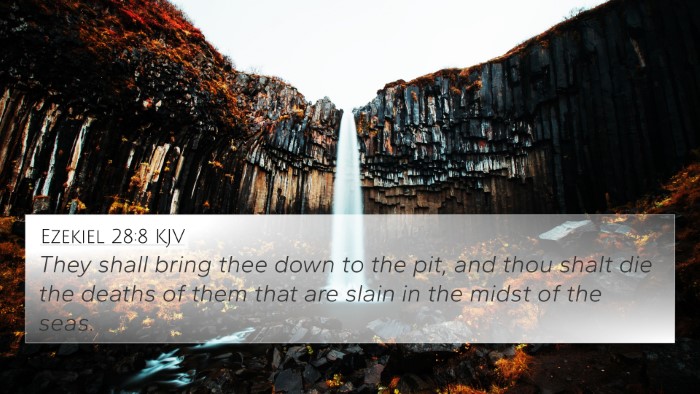Understanding Isaiah 14:15
Isaiah 14:15 states, "Yet you shall be brought down to Sheol, to the lowest depths of the Pit." This verse serves as both a proclamation of judgment and a depiction of the fate awaiting the proud and those who exalt themselves against God. Below is a consolidated interpretation of this verse utilizing insights from various public domain commentaries, including those by Matthew Henry, Albert Barnes, and Adam Clarke.
Verse Context and Historical Background
Isaiah addresses the king of Babylon in this passage, symbolizing a broader application to any power that stands against God. The historical context reveals Babylon as a formidable empire, known for its pride and self-exaltation. However, the prophecy assures that such arrogance will lead to inevitable downfall.
Key Themes:
- Pride and Humility: The verse emphasizes the perils of pride and the assurance that God humbles the exalted.
- Judgment: It underscores a divine judgment against oppressive powers and reinforces the truth that no one can stand against God’s will.
- Sheol as a Symbol: The term "Sheol" references the grave or the realm of the dead, indicating complete and utter defeat.
Bible Verse Cross-References
This verse connects with several other scripture passages that share similar themes of pride, judgment, and the ultimate authority of God. Consider the following cross-references:
- Proverbs 16:18: "Pride goes before destruction, and a haughty spirit before a fall."
- Ezekiel 28:17: "Your heart was lifted up because of your beauty; you corrupted your wisdom for the sake of your splendor."
- Job 20:5: "That the triumphing of the wicked is short, and the joy of the hypocrite but for a moment?"
- Matthew 23:12: "Whoever exalts himself will be humbled, and whoever humbles himself will be exalted."
- Luke 10:15: "And you, Capernaum, will you be exalted to heaven? You will be brought down to Hades."
- Revelation 20:10: "The devil who had deceived them was thrown into the lake of fire and sulfur."
- Philippians 2:10: "So that at the name of Jesus every knee should bow, in heaven and on earth and under the earth."
Thematic Connections
The overarching theme in Isaiah 14:15 connects with numerous other Bible verses that address the contrast between divine authority and human rebellion. Such themes reveal how scripture dialogues with itself across both the Old and New Testaments, providing a rich tapestry for understanding Greater Biblical truths.
Identifying Connections Between Old and New Testament
The prideful downfall described in Isaiah finds a parallel in the New Testament teachings of Jesus, where the concept of humbling oneself is crucial for entering the Kingdom of Heaven.
Comparative Bible Verse Analysis
Through comparative analysis, one can see how the messages in Isaiah resonate with the teachings found throughout the Bible. The call for humility and the consequences of pride are not isolated to one passage but are reaffirmed throughout scriptural texts.
Tools for Bible Cross-Referencing
Using tools such as a Bible concordance or a Bible cross-reference guide can greatly enhance one's understanding of these connections. Readers can grasp how various verses support and dialogue with each other.
Methods for Cross-Referencing Bible Studies
To deepen your study, consider the following methods:
- Topical Bible Studies: Focus on specific themes such as pride, judgment, and redemption.
- Verse Mapping: Take a single verse and map out its related verses and themes.
- Comparative Study: Look for relations between similar narratives or teachings across biblical books.
Conclusion
Isaiah 14:15 serves as a stark reminder of the consequences of pride as well as a foretelling of the truth that all powers contrary to God’s authority will be brought low. Through the lens of cross-referencing and thematic analysis, this verse connects deeply with various scriptural texts, encouraging believers to reflect on the nature of humility before God. Utilizing available resources for Bible cross-referencing can enrich one's studies and lead to a more profound understanding of scripture's integrated messages.
